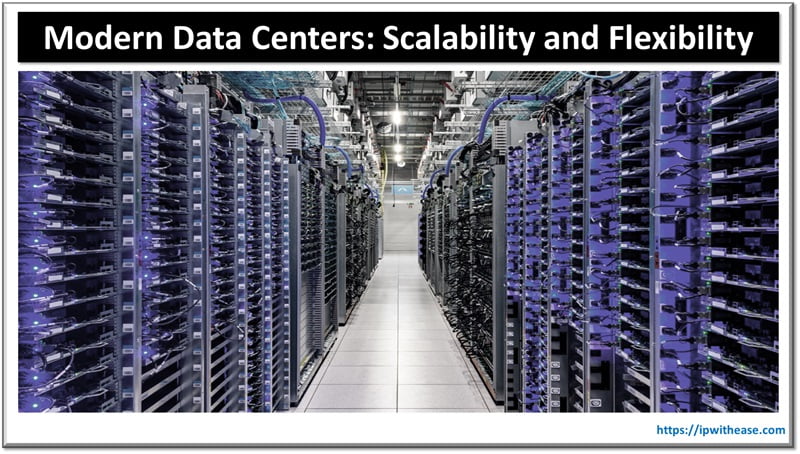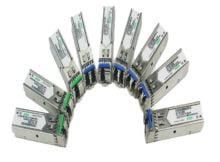Table of Contents
With the rise of technology and the tangential rise in the creation of data, an effective supply of data centers becomes quite the crux of the growth of technology and expansion of businesses. Scalability of a data center refers to the ability to increase the amount of computing power being supplied according to the increase in the amount of data being created and processed. A scalable data center prevents future architectural problems such as bottlenecking and capacity limits.
Flexibility, on the other hand, relates to the ability of a data center to constantly adapt to the changes brought about in the world of technology and changing business requirements. Let’s consider how today’s data center services manage to be flexible and scalable. We will cover the three core technologies involved in modern data centers, such as modular design, cloud integration, and novel infrastructure.

Importance of Scalability and Flexibility in Modern Data Centers
Scalability and flexibility are essential for several reasons:
- Growth accommodation: Expanding businesses tend to grow their data processing and storage needs over time. If these needs grow sufficiently substantial, it might seem to the user that the servers must be upgraded. However, because data centres are built from a modular set of hardware components with matching software stacks, scaling them up is as simple as plugging in a few new nodes.
- Technological developments: The intense pace of technological change means that ‘current’ designs have to be able to assimilate new technologies and innovations without excessive capital expenditure or downtime.
- Cost efficiency: Scalable, flexible data centres mean that firms only invest in new resources as and when needed; capital expenditure and operating costs are optimised.
- Disaster Recovery and Business Continuity: Hot sites, cold-sites and mobile data centre solutions allow rapid transition in the event of unexpected scenarios to minimise disruption.
Modular Data Centers
Modular data centers are a good solution for scalability and flexibility. They are constructed using pre-fabricated modules and can be built, expanded or moved easily.
- Fast deployment: Scalable data centers can be deployed faster than traditional ones built with bricks and mortar. This is useful for companies that need to ramp up quickly.
- Scalability: As demand increases, additional modules can be added to the existing infrastructure. This maximizes incremental growth, without a large upfront investment.
- Tailored to specific needs: Modules can be tailored to individual business needs, such as for high-density computing, applications or storage.
- Portability: Because of their modular architecture, data centers can be repositioned on demand, which could be useful for businesses that need to move their operations or set up temporary ones in different locations.
Cloud Integration
The final ingredient of the modern perfect storm of scalability and flexibility is direct connectivity of cloud services to the data center. Hybrid cloud models, combining on-premises data centers with public and private clouds, have much to recommend them.
- Elasticity: The Three Bs of cloud – BLUF, BURP, BOLT – all trim hypertrophic muscle, and of course the cloud service, which is scaled up as demand increases and scaled down as demand slacks, so the business pays only for what it needs only as it needs it.
- Back-up and recovery of data: This is made possible because it is stored in the cloud in multiple geographic locations.
- Tools for Resource Management: Cloud platforms have better tools for managing and adopting infrastructure, tracking usage, and automation of business processes, thereby increasing the operational efficiency and allowing companies to utilize resources effectively.
- Innovation: Due to having access, leveraging AI and ML through cloud-native services lets you innovate without laying down more hardware.
Innovative Infrastructure Solutions
As more data centers need to scale and be adaptable, a number of different platform infra solutions gain popularity:
- Hyperconverged Infrastructure (HCI): Architecture using software-defined technology to combine compute, storage and networking all in a single box.
- Software-Defined Data Centers (SDDC): This architecture abstracts and pools resources using virtualization technologies, improving flexibility and manageability of the resources. This approach facilitates rapid provisioning of new services and applications.
- Edge computing: ‘Edge’ computing is a way of processing data as close to its source as possible, to minimize latency and bandwidth costs. Edge computing systems are often implemented by placing more micro data centers at the edge.
- Liquid Cooling: With an increasing density of workloads in data centers, air cooling is no longer acceptable, efficient liquid cooling can provide efficient thermal management to allow for higher performance and scalability.
Best Practices for Implementing Scalable and Flexible Data Centers
To establish successful scalable and flexible data center services, the enterprise should follow the below mentioned best practices.
- Consider future needs: Understand the overall growth projections relevant to your industry, as well as the anticipated technological developments. In particular, this will help to understand the sustainability and flexibility of the infrastructure.
- Train IT Staff: Make sure that your IT staff know about using the newest technologies in data center design, including virtualization, cloud services, and a modular data center design. Continued training will be needed as the infrastructure is scaled up.
- Automation: Use automation tools to consolidate and improve operations, making better use of resources and reducing human error. Automation can improve the agility and responsiveness of the data centre.
- Monitor and optimize: Ensure continuous monitoring of the data center’s performance and resource utilization. Provide analytics and optimization to enable owners to identify and rectify any gaps in resource utilization, and maintain the data center’s efficiency and scalability.
- Sustainability: A watchword for data centers is sustainable: use hardware that is as energy-efficient as possible; make good use of advanced cooling; use renewable energy when feasible and possible.
To Sum Up
A key characteristic of modern data centers is that they are built to scale, and to flex: that means that if a business has a specific plan to grow by 100 per cent or 1,000 per cent, then the data center can accommodate such growth – and the underlying IT estate can scale accordingly. It is also possible to integrate existing data center budgets with the best features of the cloud, and to make use of innovative ways to enhance infrastructure. Thanks to this multi-pronged approach, the current way of building data centers is future-proof, which will ensure that they are indispensable for many years to come, supporting business growth, innovation and resilience.
ABOUT THE AUTHOR
IPwithease is aimed at sharing knowledge across varied domains like Network, Security, Virtualization, Software, Wireless, etc.



